Filed under: Flora | Tags: Birds, Butterflies, Dragonflies, Photography, Wagga, Wildflowers
This is the second in my series on the more interesting life found on Willans Hill. The first can be found here.

Yellow Burr-Daisy (Calotis lappulacea)
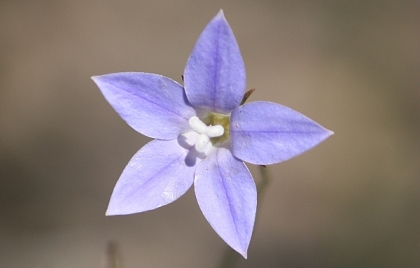
Bluebell (Wahlenbergia sp.)
There are probably several species of Bluebell on the hill.

Daisy (Brachyscome sp.)

Native Geranium (Geranium solanderi)
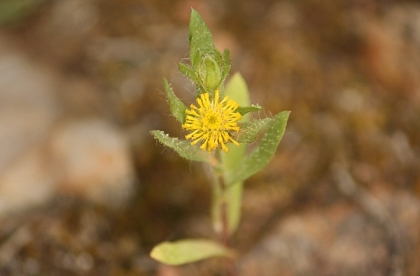
Common or Pygmy Sunray (Triptilodiscus pygmaeus)
Not a spectacular plant: it reaches a maximum height of 8cm.
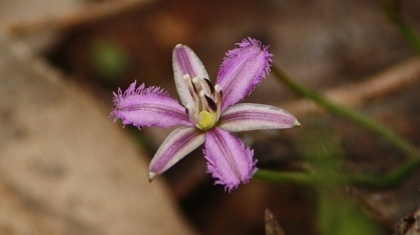
Twining Fringe-lily (Thysanotus patersonii)

Creamy Candles (Stackhousia monogyna)

Carnaby's Wall Skink (Cryptoblepharus carnabyi). Taken in Kooringal, Wagga Wagga.
Cryptoblepharus carnabyi is also known as the Spiny-Palmed Shinning Skink and the Spiny-Palmed Snake-Eyed Skink. It is commonly found in gardens in the area.
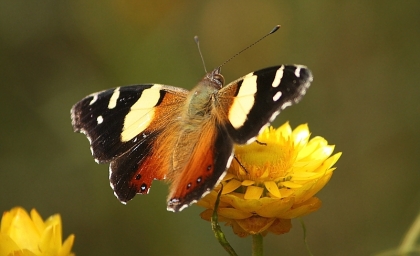
Yellow Admiral (Vanessa itea)
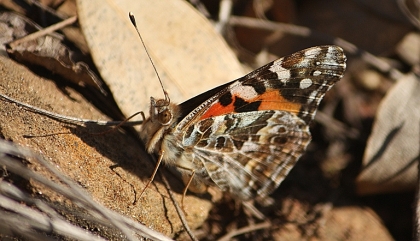
Australian Painted Lady (Vanessa kershawi)
The number of butterflies recorded on the hill has increased to 12. Two additional species have been recorded elsewhere in and around Wagga, and many more are predicted to occur in the area.
Four dragonflies are found on the hill. They are depicted in an earlier post, but for the sake of completeness are included here as well.

Blue Skimmers (Orthetrum caledonicum) Mating
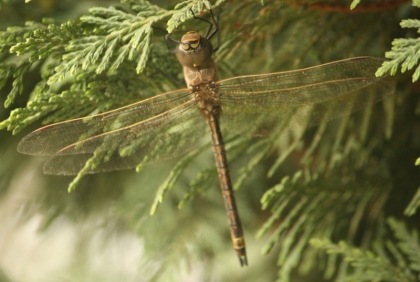
Australian Emperor (Hemianax papuensis). Taken in Kooringal, Wagga Wagga.
An unusual combination of common and scientific names: the dragonfly is neither exclusively Australian nor exclusively Papuan.
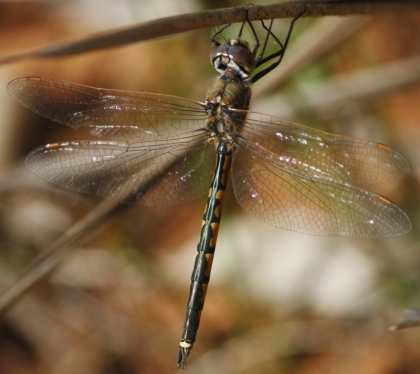
Tau Emerald (Hemicordulia tau)
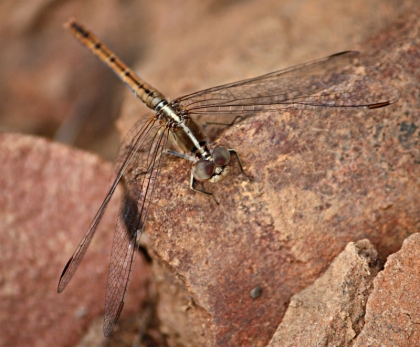
Wandering Percher (Diplacodes bipunctata)
More still to come! (And I hope to begin a series on Livingstone National Park, too).
Filed under: Observations | Tags: Birds, Dragonflies, Photography, Wagga
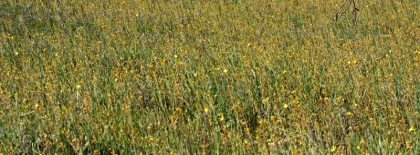
Bulbine Lilies on Willans Hill, September 18, 09
Willans Hill is a heavily disturbed patch of woodland in varying degrees of degradation. For much of the year it seems to support nothing more than a few malnourished cypress-pines (Callitris sp.) and a selection of weeds (notably Oxalis pes-caprae). In June, I noticed a few Everlastings (Xerochrysum sp.) starting to put out flowers; in July, a few patches of diminutive Early Nancy flowers (Wurmbea dioica) were spotted and Hardenbergia violacea could be be seen beginning to flower; the odd Blue Heron’s-Bill (Erodium crinitum) flowered in early August. Wildflowers were present, of course, but inconspicuous.
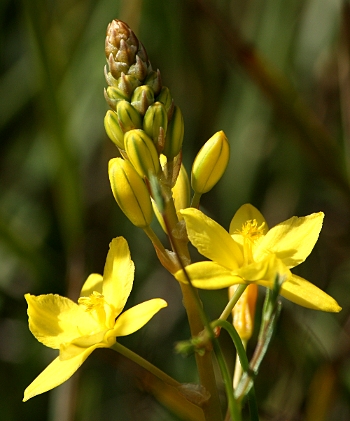
Bulbine Lily (Bulbine bulbosa)
Spring seemed to come fairly abruptly. I recorded a single flowering Bulbine Lily (Bulbine bulbosa) on the hill in mid-August. By the beginning of September there were many thousands (or even tens of thousands) of individual plants in flower. Other wildflowers have appeared too: Bluebells (Wahlenbergia spp.), various daisies (probably Brachyscome and Calotis spp.), Twining Glycine (Glycine clandestina), Scrambled Eggs (Goodenia pinnatifida), Creamy Candles (Stackhousia monogyna), Twining Fringe-Lilies (Thysanotus patersonii) and Native Geraniums (Geranium solanderi). A few Black-Anthered Flax Lilies (Dianella revoluta) are starting to show flowers.
With these changes in flora there has been, unsurprisingly, a change in fauna. Butterflies (nine species recorded so far) and dragonflies (four species) have arrived en masse, and many other insects have been observed. And of course the avian fauna has changed, too. The Noisy Friarbird (Philemon corniculatus), a blossom-nomad, has arrived in numbers, as has the Little Friarbird (Philemon citreogularis), which can be seen hawking for insects from the branches of flowering gums. The Rufous Songlark (Cincloramphus mathewsi), typically a bird of open grassland, has been seen and heard on the hill several times. The White-Winged Triller (Lalage sueurii or Lalage tricolor), a widespread but apparently never very common bird, has been recorded twice. A group of eight or more Dusky Woodswallows (Artamus cyanopterus) was also recently recorded. Pied Currawongs (Strepera graculina), on the other hand, have all but disappeared.
All of these species follow more or less predictable patterns of migration. One other recent arrival is more interesting. The Western Gerygone (Gerygone fusca) is typically regarded as sedentary, moving only in response to rainfall. Its recent increase in abundance in Wagga (having been recorded on Willans Hill, Malebo Hill, Livingstone National Park and elsewhere) may be in response to harsher conditions in other parts of its range. On the other hand, its increase in abundance may in fact be an increase in vocality: most records are made on the basis of calls heard rather than birds seen. Many birds are (of course) more vocal in breeding season, and the Western Gerygone’s call is certainly distinctive. An .mp3 recording is available from the Birds of Canberra Gardens website.
The four dragonfly species referred to above are illustrated here:
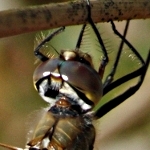
Tau Emerald
(Hemicordulia tau)
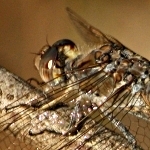
Blue Skimmer
(Orthetrum caledonicum)
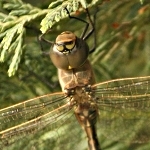
Australian Emperor
(Hemianax papuensis)
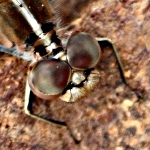
Wandering percher
(Diplacodes bipunctata)


